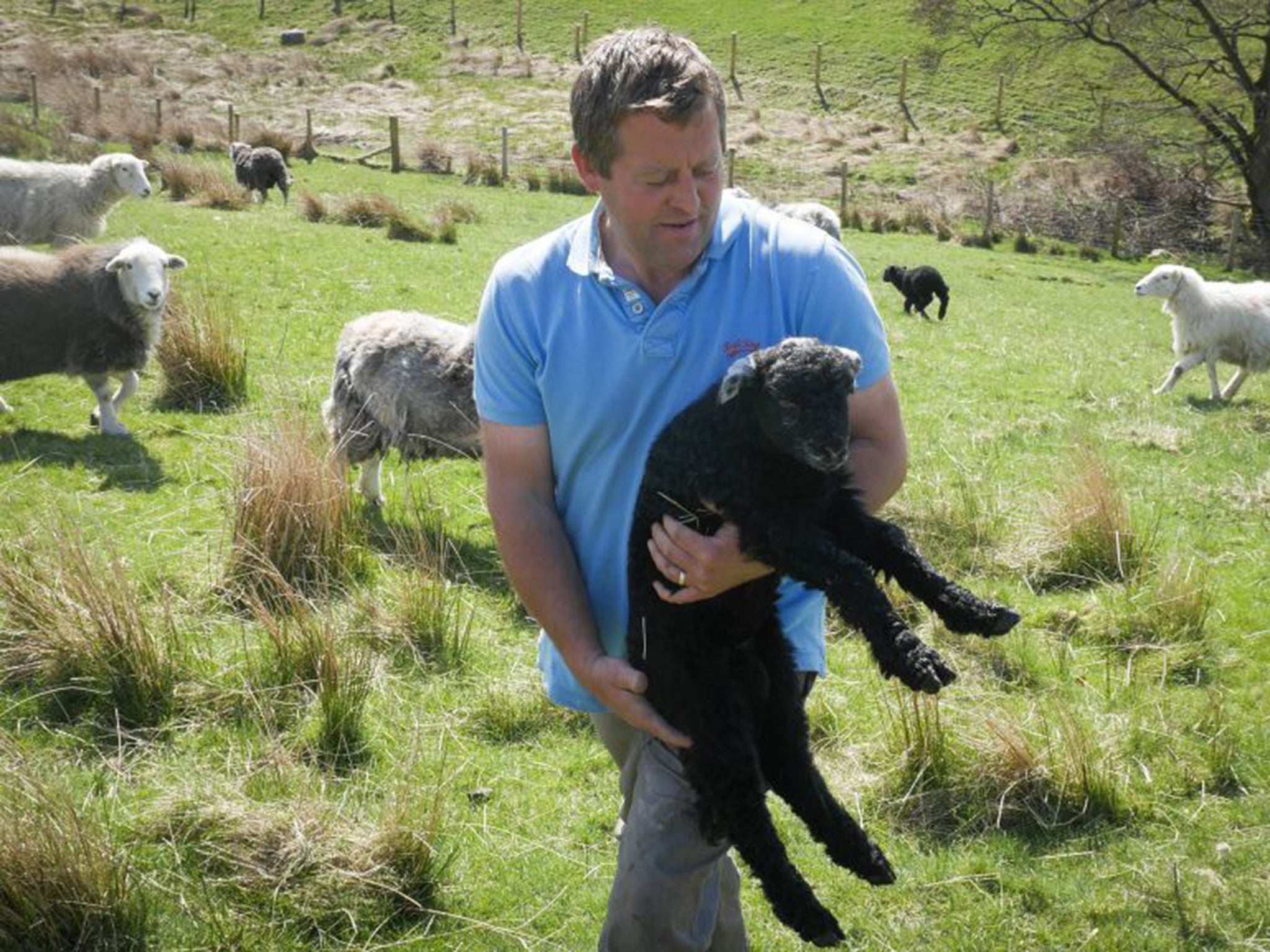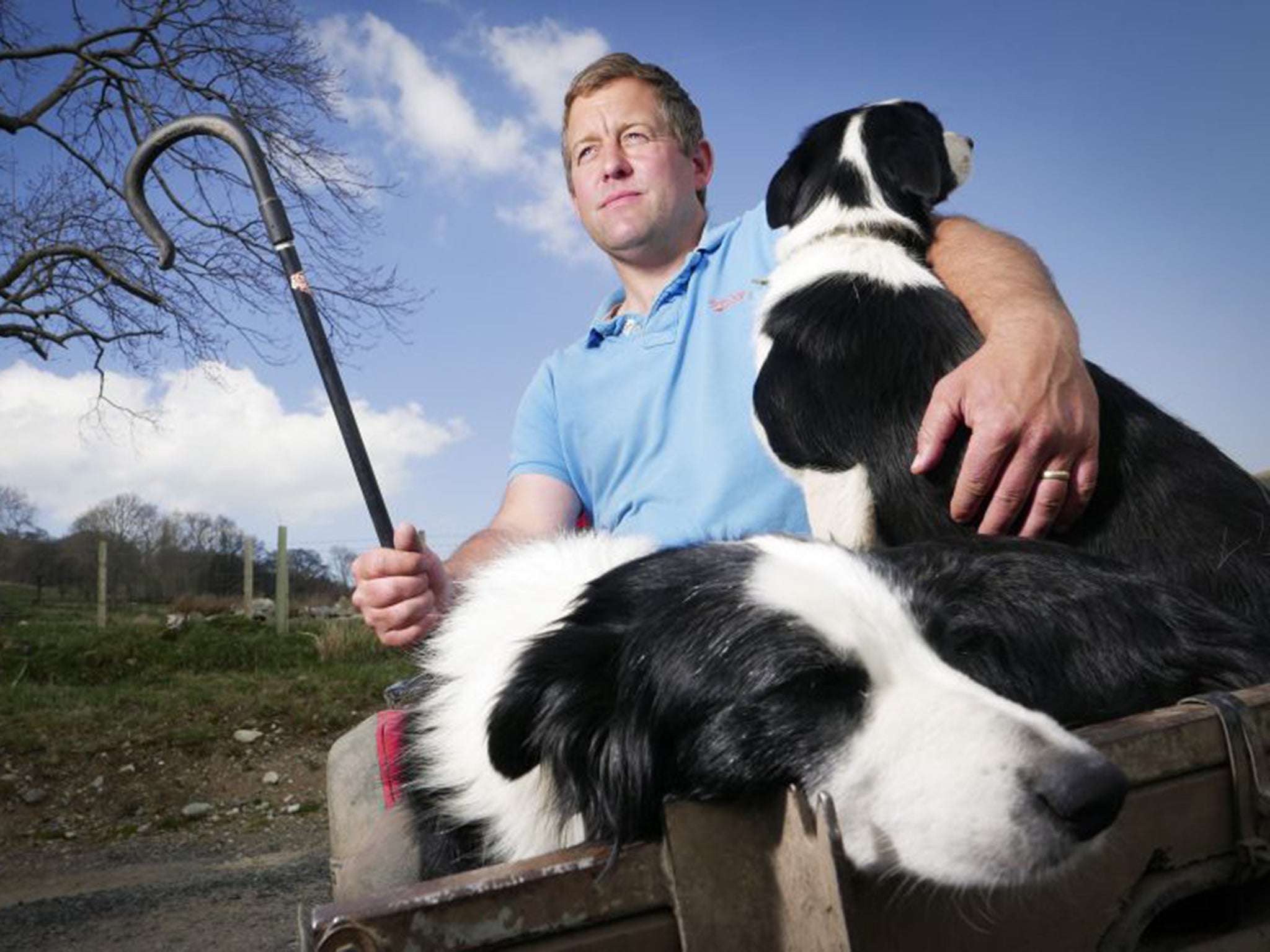James Rebanks: The farmer and best-selling author of The Shepherd’s Life on dealing with new-found fame - while delivering lambs
A Lakeland shepherd’s memoir has had fans flocking to read his tweets

James Rebanks may be a bestselling author, but lambing season makes few concessions to the literary life. The author of The Shepherd’s Life – a memoir that has spent the past three weeks at the top of the Sunday Times bestsellers list and was recently Radio 4’s Book of the Week – is spending 18 hours a day delivering lambs on his farm in the Lake District.
Rebanks’s fans, including the 60,500 people who follow his Twitter account @herdyshepherd1, have been gripped by his labours. A clip showing his sheepdog Floss’s new puppies was watched more than 400,000 times on Twitter’s video-sharing app Vine.
On a warm April day, lambs were being born at a steady rate in the fields surrounding his farm. The Herdwicks, a breed synonymous with the area, have a distinctive thick, grey, carpet-like fleece, with white heads and legs.
His family have farmed this land for 600 years and his book pays tribute to the hard work of his much-loved father Tom, who died in February, and his grandfather. Rebanks, 40, married with three children, is modest about his success, insisting he feels “part of a chain which has been part of the landscape for generations”.

His book aims to make people aware of a way of life in the Lake District that differs from the romantic vision presented by William Wordsworth and Alfred Wainwright. The area “is in the top 10 most historic farmed landscapes in the world and needs defending”, he says.
The book explores how farming has adapted as the world around it has changed. Only a few hundred farms are now left in the Lakes.
Rebanks is no ordinary shepherd. He hated school, and his academic ability did not become apparent until much later. He went to Oxford in his twenties and got a double first in history, but was keen to return to the Lakes.
A second book could be in the pipeline. “I love writing and it is good that it is being taken seriously,” he says. Writers he admires, such as Helen Macdonald, who wrote H is for Hawk, have been complimentary about his debut, and it has attracted great reviews.
Out in the fields, he catches a lamb by its tail. It is only 24 hours old but already “as fast as they come”.
The lamb’s father , or tup, was the star of a show in Eskdale two years ago and was sold for £5,500. The newborn is the “spitting image of his father,” Rebanks tells me. The shape of his ears and the wrinkles on his “noble Roman nose” indicate he will be a good Herdwick. “He’s already strutting around like he knows he’s important,” says his owner.
Rebanks says he studies his flock “like great works of art” as they are objects of beauty as well as being of practical value.
Those commanding the highest price have long bodies, short sharp teeth, legs that stand square “and perfect white lugs [ears]”. There’s also a sharp distinction between their grey body and their white head – something which he says is “surprisingly difficult to perfect”.
An emergency has arisen in another part of the field, where a lamb is stuck during birth. Its head “will swell and it will die”, Rebanks says. He catches the mother and helps the lamb out. He’s lost four or five lambs to foxes in recent days. A ewe who lost a lamb sniffs at another newborn, but he shoos her away telling her: “That’s not yours.”
A struggling ewe paces, lifting her head like a wolf howling; then she grazes, lies down and gets up again. Rebanks calls in his sheepdogs, Floss and Tan, as the ewe is too wild to let him near. They corner her and he places a knee on her hind quarters as he delivers one of the twins. I’m called over to help deliver the other, leaning on her haunches as the lamb slithers on to the grass. She immediately begins to lick both of them.
Rebanks is two-thirds of the way through the lambing season – an intense period that lasts up to a month. He has to constantly make rounds of the fields to check on his flock to ensure the lambs are healthy and feeding properly, that the ewes’ mothering instinct has kicked in. One wobbly-legged lamb is given a shot of antibiotics.
Rebanks finds a lamb stuck in a cattle grid bleating pitifully and lifts it to the safety of its mother, who is standing nearby watching helplessly. Herdwicks are incredibly loyal, he says, and “up on the fells daughters born three or four years ago will remain with their mothers”.
It’s easy to see why his Twitter account is such a success. Like the book, the tweets shine a light on his world that is mesmerising to outsiders. Snow storms two years ago led to a spike in followers, as did the birth of the pups last month, which he live-tweeted.
Now the literary shepherd is receiving fan mail at the farm. A letter from one of his teachers is addressed to “The famous James Rebanks.” He laughs, a little overwhelmed by all the attention.
Join our commenting forum
Join thought-provoking conversations, follow other Independent readers and see their replies
Comments